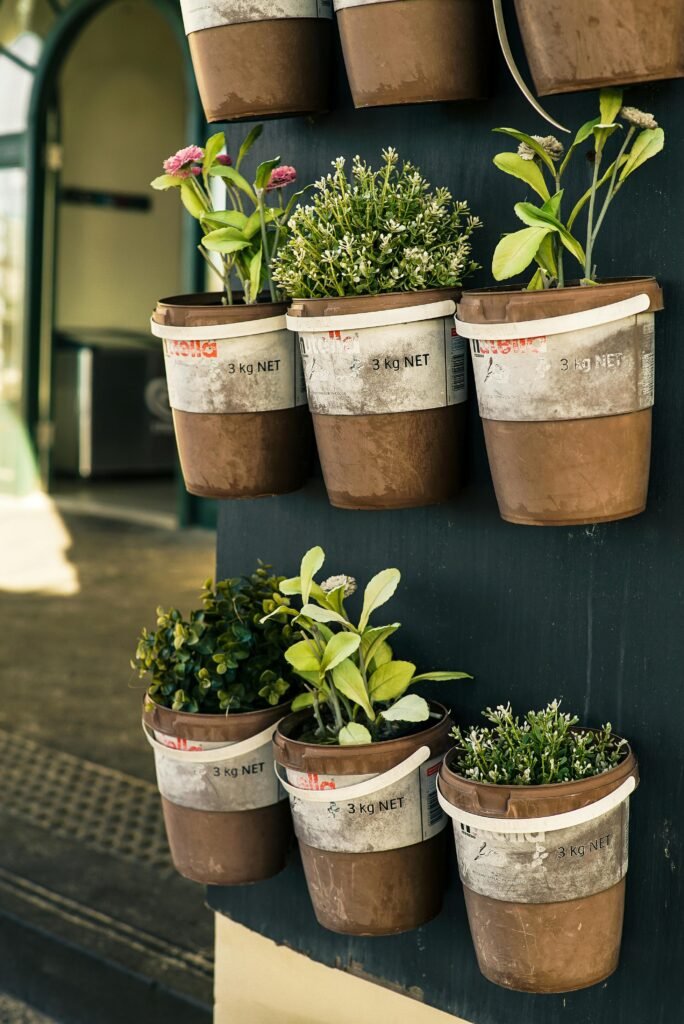What are Community Gardens?
Community gardens are plots of land designated by a local community where different people come together and cultivate different plants, which may be fruits, vegetables, or flowers. These are good grounds for people to come together and work in teams. They help them know one another, make them team players, and make them feel responsible about their communities. They can differ in size and design, depending on the needs of the communities and the availability of the resources, from a small backyard to larger areas of land.
Community gardens combine people to produce food and make the neighbourhoods greener. Members of the group or gardeners usually pay for small land plots in the gardens. This helps the participants develop their favorite varieties of plants at the same time enhancing the overall environmental and aesthetic beauty of the region. This aspect of community gardens promotes sustainable use, such as organic gardening and composting, and educates one on how to care for and cultivate plants. Therefore, this development will benefit the beginners just like the experienced gardeners.
Formation of community gardens also enhances neighbourhood relationships through them. This makes them friends, even if they are different from one another. The whole community may feel stronger and connected because of this. Organized events, workshops, and sharing responsibilities make it easier for people to learn new things, trust one another more, and make their community work better. Therefore, community gardens play a huge role in improving the social fabric of the neighborhood. It encourages sustainability while creating an element of belongingness among the residents.
Benefits of Community Gardens
A community garden is a good resource for any neighborhood. They greatly improve environmental sustainability and build community spirit.
Fresh Fruits and Vegetables
The most significant benefits of such gardens are fresh produces. Participants directly enjoy a different variety of fruits and vegetables, often resulting in better nutrition habits. This access to fresh local produce would promote a healthy diet, hence promoting better well-being.
Reduced Grocery Bills
The other major benefit is the possibility of saving grocery money. Being able to produce their food ensures that community gardeners spend less money buying groceries which has become an essential part of today’s economy. Such reduced spending benefits economically challenged people by enabling them to afford healthy food.
Physical Activity
There are also various physical activities that are performed within a community garden. Performing garden work promotes some kinds of exercise, which is highly important for healthy living. So many activities of planting, weeding, and harvesting not only help in physical fitness but allow a person to enjoy nature, which leads to an increase in his quality of life.
Improved Mental Health
There is also mental wellness benefit regarding the existence of community gardens. Gardening can also be healing in nature since it reduces stress and heightens relaxation. It builds a sense of accomplishment in nurturing plants and watching them grow and builds connection as well, which is important for mental health. Community gardens usually become social hubs where interaction and relationship building occur between participants. This helps individuals feel that they belong and are part of a community.
Positive Impact on Environment
Apart from the personal benefits, community gardens also benefit the local biodiversity and environment. They provide habitats for different species, encourage the growth of native plants, and foster ecological gardening practices. Such gardens help improve urban green spaces, improving air quality, reducing stormwater runoff, and increasing local wildlife populations. Collectively, these benefits show the different role of community gardens in promoting sustainability.
Community Engagement and Social Interaction
Community gardens are also very important for social building and interaction. Such areas act as community centers where diverse people share their expertise, resources, and experiences about their garden. Actually, the community gardening process encourages teamwork cooperation, in which all the members contribute to planting, maintaining, and harvesting the crops. Thus, this will create an element of ownership and pride. It encourages participants to strengthen their bonds with one another.
Community gardens are not only a place for building friendships but also help to bridge cultural gaps. Many participants come from different cultures, and it offers a chance to learn about each other’s food and gardening traditions and practices. Such cultural exchange can bring more understanding and appreciation of others’ perspectives. It makes the environment more inclusive. Residents may share their traditional recipes, gardening techniques, or even cultural celebrations. Hence, it enriches the social fabric of the community.
When people join together to create a garden, they can share with one another, learn from each other, get to be closer friends, and make them feel like a part of the community. Members of the community might gather during regular gatherings such as workshops, potluck dinners, and seasonal celebrations. It is an opportunity for everyone involved who shares their skills and knowledge, not just to the plants but to life-long friendships.
Community gardens help improve the general well-being of the residents. They do this through outdoor accessible spaces. People who feel lonely in cities can be helped by a garden visit. Spending time in nature can make them feel less lonely. When people work together on community gardens, they help their neighbourhood become a better place. This can help the neighbourhood appear more friendly, helpful, but also better for the environment.

Impact on Local Environment and Biodiversity
Community gardens play an essential role in the development of the local environment, thus encouraging biodiversity of an urban and suburban area.
Soil Health Improvement
Community gardens improve soil quality. Organic gardening practices are the best way of enriching the soil with nutrients essential to life through composting and crop rotation, among others. This increases fertility while minimizing erosion and makes ecosystems more resistant.
Habitats for Pollinators
Apart from providing irrigation facilities to improve soil quality, the community gardens have been considered an essential habitat for pollinators such as bees and butterflies. The cultivating different types of flowers and plants in such gardens serves as a crucial source of food and sites for nesting for these beneficial species. Increased populations of the pollinators ensure greater crop yields and the growth of native plant species in the general health of the ecosystem. The presence of diverse flora would attract various organisms and develop the greater biodiversity, which is also helpful for resilient ecosystems.
Effective Stormwater Management
Community gardens would also help in efficient management of stormwater. Mostly, urban areas face severe problems with water runoff in cities because of many hardened surfaces such as roads, highways, and buildings. There is flooding as well as contamination of rivers and streams due to this problem. Community gardens help fight these issues by absorbing rainwater and promoting groundwater recharge. Their permeable surfaces allow water to enter the ground, reducing the volume and speed of runoff. This function helps to protect the local water bodies as well as minimize the potential erosion and sedimentation challenges.
So, the integration of community gardens into urban areas promotes both environmental sustainability and biodiversity. These community spaces create a living ecosystem that benefits both people and nature by building healthier soils, supporting essential pollinators, and effectively managing stormwater.
Educational Opportunities and Skill Development
Community gardens are becoming the popular place for learning and skill building where people learn new things. People at all ages can learn something there. These are active environments through which the participants can engage in the practicality of activities that tend to ensure an understanding of the ways of gardening techniques, sustainability, and nutrition. Community gardening encourages people to appreciate horticulture and also understand how to keep the environment healthy. Learning to cultivate plants, whether from seeds or seedlings, acts as a practical introduction into the principles of botany and organic farming.
Community gardens, at the same time, provide space for all people to team up and share knowledge. Mostly, workshops are sustainable practices of gardening, such as composting, permaculture, and biodiversity conservation. The learning in the community garden helps people to develop skills that can help themselves and their community. This helps people make good choices about where their food comes from and how it is grown. Thus, it thus promotes an overall understanding of environmental conservation.
In addition to the gardening skills, a community garden is an excellent opportunity to learn about nutrition. Since people grow and harvest their fruits and vegetables, they become immediately aware of all the benefits fresh produce offers. Cooking demos and nutritional value conversations are also part of educational programs that emphasize the connection between gardening and healthy eating. Adding these modules helps to get knowledge about food systems and builds a sense of responsibility toward one’s health.
Community gardens are not only a source of fresh produce but also a great place for learning. Here people will gain skills ranging from gardening, sustainability practices, and nutrition. Through active participation, the community members are better equipped to play their roles in protecting the environment and observing sustainable practices in daily lives.
Promoting Sustainable Practices
Organic Farming
Community gardens form important platforms for sustainable agriculture. Such institutions provide easy access for individuals to practice organic farming, which promotes natural processes instead of relying on synthetic inputs. Crop production in these gardens will improve soil health and decrease the amount of pollution associated with conventional farming methods. People realize crop rotation, companion planting, and other organic methods that result in more sustainable food production.
Composting
Composting is another crucial element of sustainable agriculture that community gardens focus on. In this practice involve, we recycle organic waste, such as kitchen scraps and yard debris, into nutrient-rich compost so that the soil can be made more fertile. Community gardens often host workshops where they educate participants about the benefits of composting and how they can effectively implement it. This helps in turning waste into a productive resource, promoting the principles of sustainability that reduces landfill contributions. Hence, they help in educating people in a circular approach to handling waste.
Water Conservation
Water conservation techniques are also practiced in sustainable community gardens. Participants learn efficient irrigation practices such as drip irrigation systems and ways to collect rainwater because these water conservation techniques use a smaller amount of water, allowing the plants’ and the soil’s good health as well. In the course of this, members are encouraged to apply some of these lessons learned into their homes. Thus, it creates a culture of sustainability beyond the garden.
Therefore, community gardens play a great role in making the community adopt the more sustainable lifestyles. As these gardens provide hands-on experience in organic farming, composting, responsible use of water, it acts as an educational resource. This makes the people know how to relate with the environment by putting that knowledge into their daily lives. Therefore, communities begin to achieve a more sustainable future for themselves.

Challenges Faced by Community Gardens
Community gardens are a very important feature in any sustainable city, but there are many challenges that face them and prevent them from being functional or living for long.
Funding
One of the major problems is funding. Community gardens often rely on grants, donations, and sometimes even small entrance fees from participants to cover all the costs. When there is a shortage of funds, there may be limited resource in terms of implements, equipment, and general maintenance of the infrastructure. In most cases without stable funding, gardens tend to collapse and shut down.
Access to Land
A second major problem is access to land. In urban areas, land is scarce, so community gardens cannot guarantee an extended period for their plot. And even land use policies might prevent the development of gardens. Zoning laws could limit where agriculture can take place. Community groups can request policy changes in the local government to include community garden development into their priorities to increase land access for food production as a reduction measure for these problems.
Maintenance
Another significant challenge of community gardens is maintenance. Care needs to be provided from time to time so that the garden remains fruitful and also welcoming. However, many times, lack of frequent volunteer participation negatively impacts these efforts. Engaging community members through workshops, volunteer days, and education programs can build a sense of ownership and encourage frequent involvement in the maintenance of the garden.
Community Participation
Lastly, involvement is very significant in community gardens. Involving all members of the community such that everyone will feel belonging, and ownership is most challenging. This can be tricky since most neighbourhoods have diverse compositions. Organizations can engage such groups through outreach programs and activities. This will build a sense of inclusion and increased participation in the garden. Through creative and collaborative thinking on such challenges, community gardens can expand and help in making cities sustainable.
How to Start a Community Garden
Starting a community garden is a great thing to do. It makes us more sustainable, and it can bring people together. Let us learn how to start it.
Selecting Land
The very first step is selecting a land plot. This could be an empty lot, park land, or part of a larger property. Of course, it will be necessary to contact local government or landowners for the permission and determine any regulations that may affect the use of this land. Then, organize a community group consisting of like-minded people with passion for gardening and sustainability.
Organizing
Effective organization is required for the success of community gardens. . Initial meetings will be crucial in brainstorming ideas, setting goals, and developing a shared vision for the garden. In the group, define roles and responsibilities, which should be able to simplify efforts going forward. Communication is highly important. Discussion, updates, and schedules about gardening activities or events may be done by a group chat, email list, or social media page.
Funding
Funding is another important element of launching a community garden. Look for local grants or sponsorship from nonprofits or local businesses who support sustainability projects. Crowdfunding and community fundraiser are also great ways to raise those funds for soil, seeds, fencing, and tools to get started.
Planning and Maintenance
The garden layout should be planned according to the crops that people want to grow. It would be better to select the plants according to the region’s climate and soil condition. Separate plots for individual gardeners can help develop a sense of responsibility and possession. The garden needs frequent maintenance. Plan the schedules for watering, weeding, and harvesting and get everyone involved in this community garden to make it long-lasting.
Do share your thoughts by commenting below.






